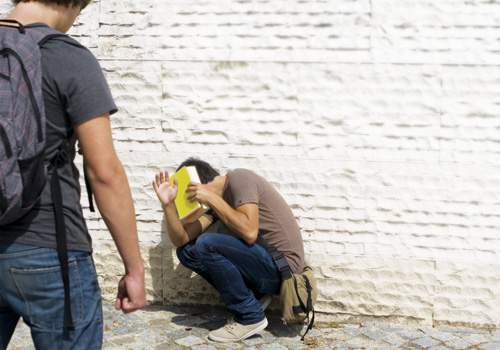To effectively combat bullying, a proper assessment of the aggressor is essential, as well as a holistic approach.
Contributed By Yong Yung Shin
In addressing the problem of bullying, attention is usually focused on the victim. But The Bully-Free Forum 2011 on July 16 at Republic Polytechnic shed much insight on aiding the perpetrator, in order to combat bullying in a holistic and all-inclusive manner. After all, every child matters, be he a bully or victim.
Organized by the Singapore Children’s Society, the forum featured Dr. Annis Fung, an assistant professor of the Department of Applied Social Studies at the Faculty of Humanities and Social Sciences, City University of Hong Kong.
She shared in detail effective strategies to better manage bullying, culled from her ground-breaking work on Project C.A.R.E. (Child and Adolescents at Risk Education), a school-based anti-bullying program in Hong Kong.
In his opening address, Senior Minister of State and guest-of-honor Mr. Heng Chee How cited a study by the US National Institute of Child Health and Human Development which found that 10.6 percent of students reported bullying others “sometimes” and 8.8 percent admitted to bullying others “once a week” or more. In fact, bullying occurs most frequently among aged 10 to 14. The study also found that when bullying continues unchecked after the age of 7, the ability to make a change for the better is more difficult. Research has shown that left unaddressed, bullies may grow up to commit crimes of greater severity.
According to Fung, there are two types of aggressors—the proactive aggressor and the reactive aggressor. “A lot of focus is being devoted to the intervention stage of bullying, but we need to make a clear assessment in distinguishing between the different types of aggressors before dispensing the intervention.” The common concept of a bully, i.e. the one who lands the first punch, is too simplified, she said—not all aggressive behaviors are bullying behaviors.
The proactive aggressor is typically a high-achieving student, smart and confident but lacking in empathy and unable to see things from the other’s perspective. He is calm and rational, and is usually the leader of the pack. He uses aggression as a tool to achieve his personal goals of self-enhancement and acceptance by peers.
Reactive aggressors, on the other hand, are wrongly labeled as bullies. Oftentimes, they have been victims of bullies in the past. The reactive aggressor is impulsive, hot-tempered, depressed. He uses aggression as a defensive response to frustration and provocation, and hence is commonly isolated and unwelcome by his peers. There is usually some form of aggression in his family, as opposed to the former’s.
The Root: Irrational Beliefs
Demonstrating the use of cognitive behavorial therapy in her work, Fung explained that most bullying behavior have roots in irrational beliefs. In the case of the proactive aggressor, he believes that he must have certain and perfect control over things, hence the compulsion to exercise power over the weak.
The prescribed solution is therefore to identify and dispute the irrational belief accordingly, following it through with enhancing the competence of empathetic understanding and perspective taking ability using reverse role-play, for example. Common methods to harness the innate strengths of proactive aggressors are done through leadership training and teaching them to derive satisfaction and achieve goals from positive means. In instant intervention, those in charge should not condemn students on the spot, but follow up with the parties involved separately in order to get an objective understanding of what transpired.
Fung interspersed her sharing with video clips reenacting scenes of bullying taking place. In the case of a reactive aggressor, he becomes provoked when his classmates huddle in a small group some feet away, looking at pictures on a phone while looking his way and laughing. He loses his temper and becomes physically aggressive in order to stop what he surmises is a case of them making fun of him.
The irrational belief that if something is fearsome, we should retaliate by becoming terribly upset and obsess about it, leads to the thought pattern that one must be equally aggressive in order to protect oneself. Besides dispelling the irrational belief through counseling, anger management strategies are adopted, and social and problem-solving skills are sharpened. As such, there is no “one size fits all” approach to tackle bullying.
Additionally, a multi-dimensional approach that involves the parents, teachers and peers is essential. “Bullying is a multi-faceted issue which needs to be dealt with in an integrated and inclusive manner,” said Mae-Lim Hoon Ann, the honorary secretary of SCS. “Wrong parenting normalizes bullying behavior,” added Fung.
As such, parents of bullies should teach their children about the significance of their own behaviors and never encourage them to evade responsibility for their actions. At the same time, they must not be impulsive in expressing anger toward their child without listening to their explanations beforehand and understanding where their aggression is really coming from.
The annual Bully-Free Forum is a public event aimed at raising awareness about school bullying among educators, social service practitioners and parents. It is part of the Bully-Free Programme started in 2004 by the SCS to promote a bully-free culture in schools.

